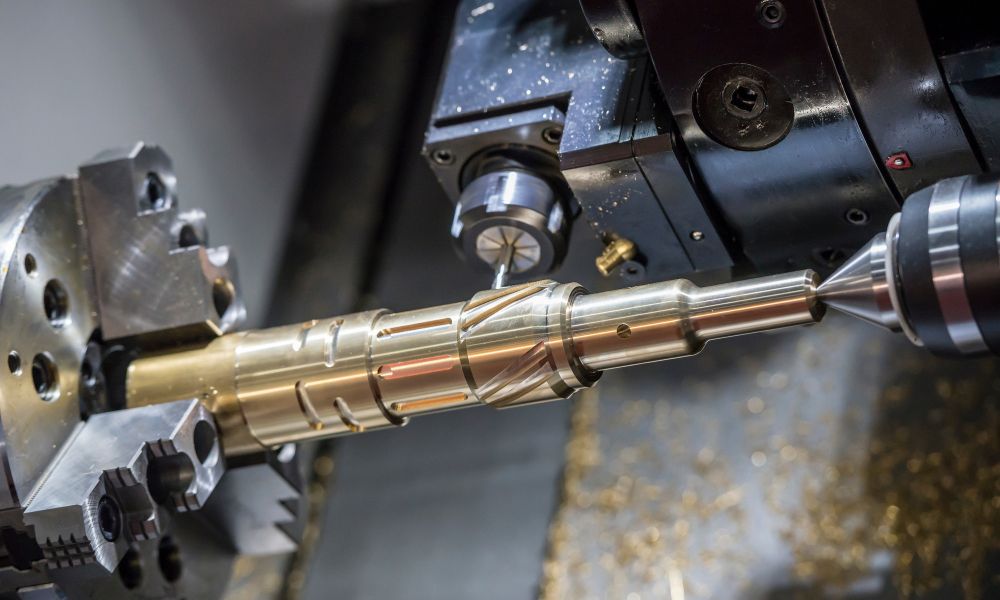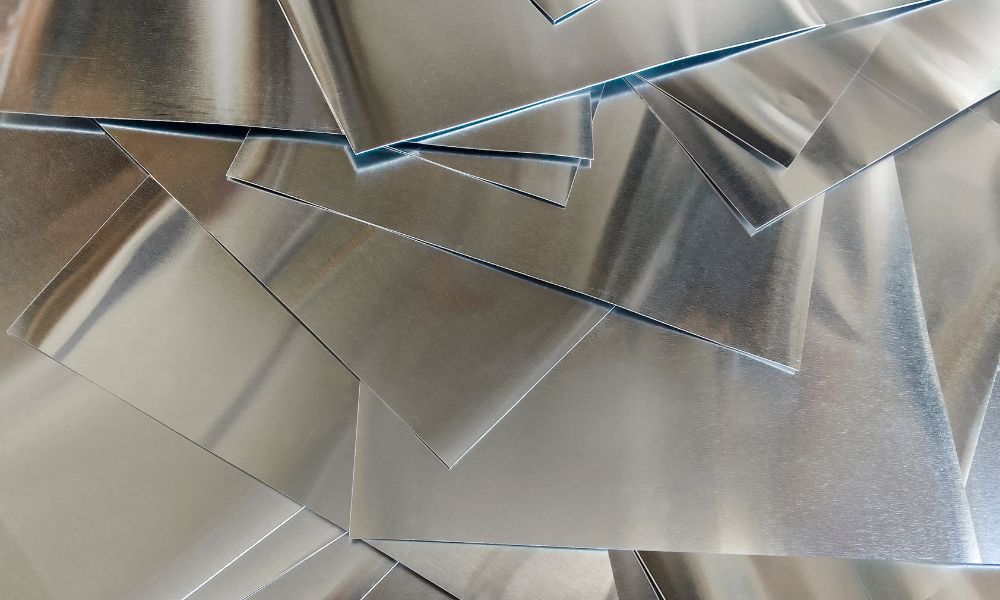5 Benefits of Using Brass in Automotive Manufacturing
Leave a Comment
In the early 20th century, ingenious Americans started creating automobiles with mostly brass components inspired by European automobile innovations that found their way to the United States. The five benefits of using brass in automotive manufacturing remain true as we move forward.
Extremely Durable
Brass’s resilience to wear and tear is one reason for its long lifespan. This metal is far more resistant to damage from tools and heavy items than lighter metals like aluminum or copper. Because of this, it is well suited for the automotive industry, where metal surfaces endure significant wear and tear.
Because of its superior resistance to stains, manufacturers rely on brass for tanks, tubes, and radiator cores. Brass radiators are more affordable, easier to produce, and stronger than their aluminum counterparts.
Fire-Resistant
Building a car isn’t as simple as putting together an IKEA cabinet. A car doesn’t come with an instruction manual that tells you to connect certain pieces. Building a car requires precise welding techniques and materials that can withstand the highest temperatures—brass can handle them. Its fire resistance makes it difficult to turn away from this precious metal.
Versatile
Brass is integral to the automotive sector because the metal serves various purposes and is extremely versatile. It’s available in many different tones, so finding a complement for the vehicle is simple. Sometimes, you must contort a component to find a proper fit. In this case, a brass fixture is best. Brass is significantly more malleable than iron or steel.
Corrosion-Resistant
Rust can be a vehicle’s worst enemy. Brass is a popular choice for auto manufacturers because it resists corrosion. This metal is your best choice for durable fittings since rust and corrosion accelerate the fitting’s natural wear and tear process.
Retains Its Original Properties
Thanks to its fascinating properties, there’s no limit to how many times you can recycle brass. It retains its original chemical and physical properties, unlike many other materials that degrade throughout the recycling process. Brass recycling offers a perpetual cycle of benefits.
Recycled brass alleviates pressure on overcrowded landfills by diverting usable material from the trash stream. Mining new brass harms the environment, and our solution eliminates that requirement. Recycling brass is far more cost-effective than mining new minerals (in this example, brass). Recycling produces far fewer greenhouse gas emissions than mining new materials.
Car makers realize the five benefits of using brass in automotive manufacturing, leading to robust production. Thin Metal Sales knows how vital thin sheet metal can be in any manufacturing sector, so we want to produce the finest and strongest options for our customers. Our veteran-owned business has been a reliable supplier of thin-gauge sheet metals for nearly five decades, so you know you can count on us!
When To Choose Aluminum Over Stainless Steel
Leave a Comment
Aluminum and stainless steel are the most widely utilized metals in manufacturing. The metals are workhorses thanks to their versatility and longevity. But there are specific situations where one of the metals is better. For this instance, let us explain when to choose aluminum over stainless steel.
Lightweight & Strong
Both stainless steel and aluminum are durable; however, steel is generally stronger than aluminum. Where aluminum gets the edge over steel is that it has a better strength-to-weight ratio, making it the ideal choice when you need something durable but lightweight.
You’ll often see aluminum used for aircraft or high-rise buildings. Most city skylines have towering structures because of aluminum, while sports stadiums with retractable roofs have the precious metal to thank for making it a reality.
Malleability
Because of its adaptability and pliability, we can contour aluminum in various ways. It’s malleable to almost any form without compromising its hardness or rigidity. Yet, the process does not form a fracture or weakness plane.
A loss of elasticity means it does not return to its original form after bending or stretching it. It’s important to note that aluminum maintains its malleability at room temperature. Only when it feels excess heat will it soften and become more flexible.
Colder Temperatures
In contrast to most types of steel, aluminum retains its malleability even when chilled. Yet aluminum improves in strength, ductility, and toughness as it ages. Consider this when making material choices for metal components with very low temperatures. Because of aluminum’s resiliency in frigid temperatures, it is abundant for those ships traveling through the Arctic.
Rust-Free
Aluminum’s best feature is that it is corrosion-resistant without any additional care. Simply put, aluminum doesn’t rust. You won’t have to worry about paint or coatings chipping or wearing off with metal. To prevent rust and corrosion, you must coat and treat steel, particularly if the steel item is in a wet or abrasive setting.
Conductivity
Aluminum has the reputation of being an excellent electrical conductor. Although aluminum has a lower conductivity than other metals, it is far more efficient at transmitting an electrical current. Long-distance power lines, high-voltage electricity transmission entry, and building wire feeders all employ aluminum. And without aluminum, many of us wouldn’t have 200+ channels to watch since it is prominent in satellite dishes.
Learning when to choose aluminum over stainless steel can make a huge difference in the various fields we use the metals. Thin Metal Sales can be your dependable aluminum sheet metal supplier. For five decades, Thin Metal Sales has supplied the highest-quality cut-to-length sheet metals across the country, so let us be there for you and your sheet metal needs.
The Differences Between Brass and Copper
Leave a Comment
Two metals that often get confused with one another are brass and copper. The educated metal worker might be able to spot the differences within seconds, but the layperson might struggle to find the discrepancies. We’ll teach you the differences between brass and copper so that you’ll no longer use the terms interchangeably.
Brass
Brass is an alloy composed of two or more metals. It mostly consists of copper and zinc, with traces of tin often present. Brass may vary in color and quality depending on the relative amounts of copper and zinc present in it. It may look anything from pale yellow to a drab shade of gold. Due to its resilience and malleability, you can find brass often in plumbing, mechanical parts, and musical instruments. Since it looks like gold, you’ll see brass in décor pieces as well.
Copper
The element copper is a part of the metal group of the periodic table. People mine it from the ground and use it to make brass and bronze. Copper is prominent in electronics and computing devices due to its excellent conductivity and strong heat resistance. Additionally, copper pipes are common in plumbing systems. Scrap yards place a high value on copper because of its widespread use and sustainability.
How Brass and Copper Are Different
Since brass contains copper in its composition, distinguishing between them may be challenging. Yet they’re distinct from one another thanks to several qualities. Use these guidelines to distinguish between copper and brass.
- Color: Brass generally has a bright yellow-golden hue, whereas copper is more reddish-brown.
- Composition: Since copper is an element, pure copper is the only ingredient in copper, although traces of other metals affect its purity. Brass is an alloy. Thus, it has traces of copper, tin, and zinc.
- Sound: It’s clear when you strike copper or brass metal. Copper is more of a baritone and low, while brass is a higher-pitched soprano.
- Durability: Copper is the heavier material and corrodes at a slower rate. Copper’s strength is its malleability, but it isn’t as durable.
- Magnetism: Theoretically, both materials shouldn’t have a magnetic reaction. Nevertheless, traces of iron in brass can elicit a response to magnetism. Copper, on the other hand, won’t react.
Learning the differences between brass and copper helps you see how unique each material is and decide which to use for any project you have. Before starting your next job, consider Thin Metal Sales as your brass and copper sheet manufacturer. There isn’t a big or small job that we can’t help you with. Veteran-owned and operated since 1976, we provide the highest-quality custom slit-to-width sheets.

